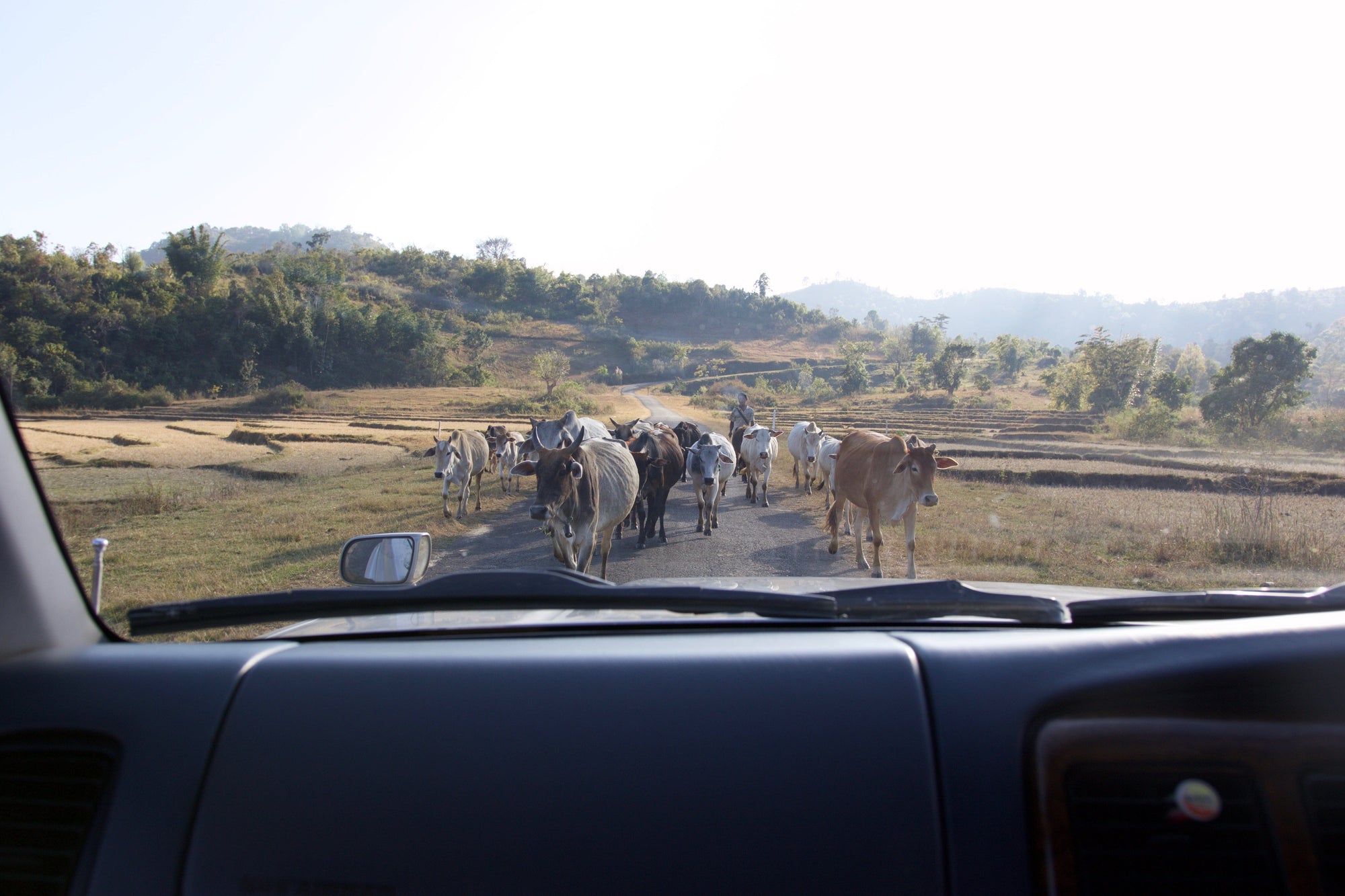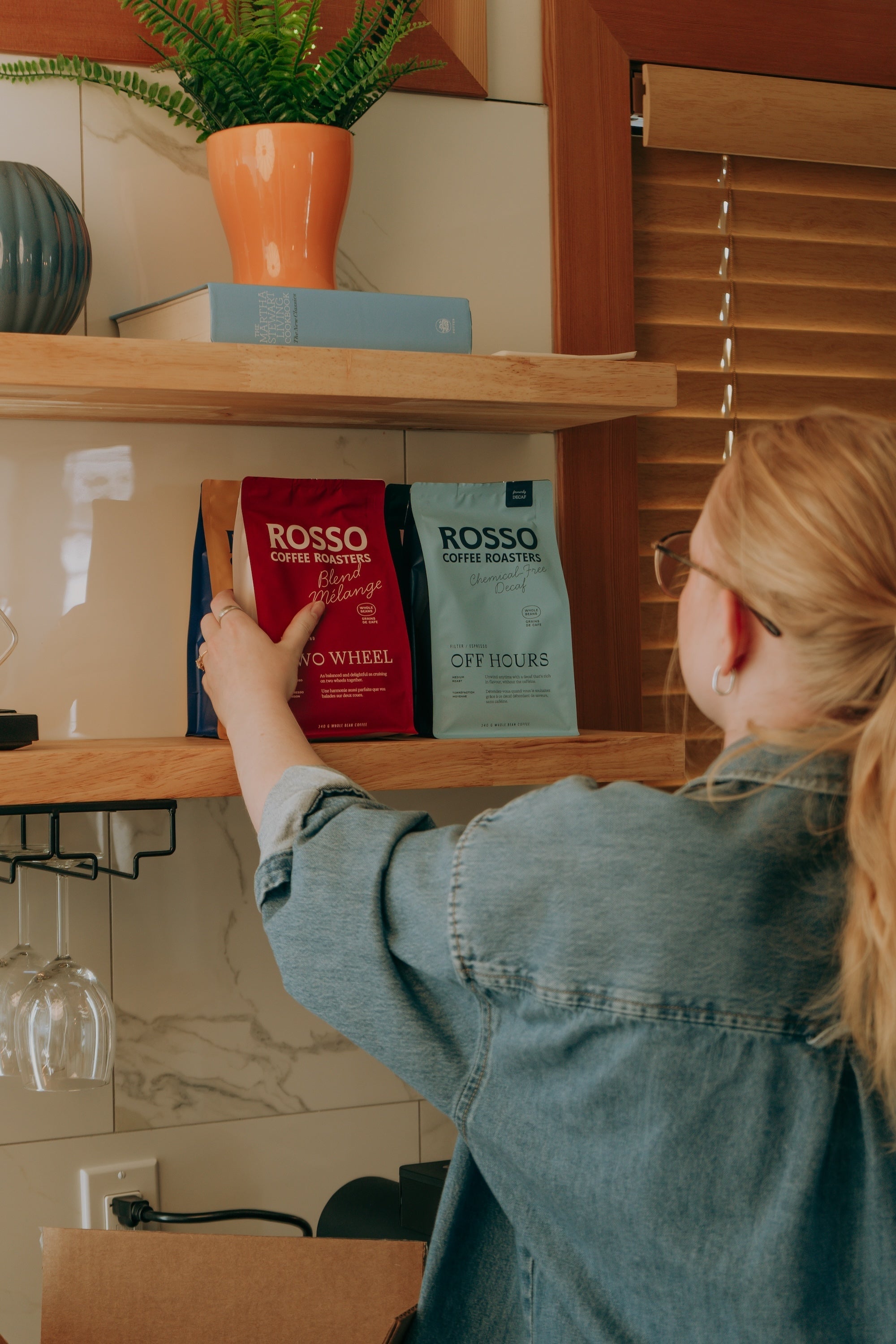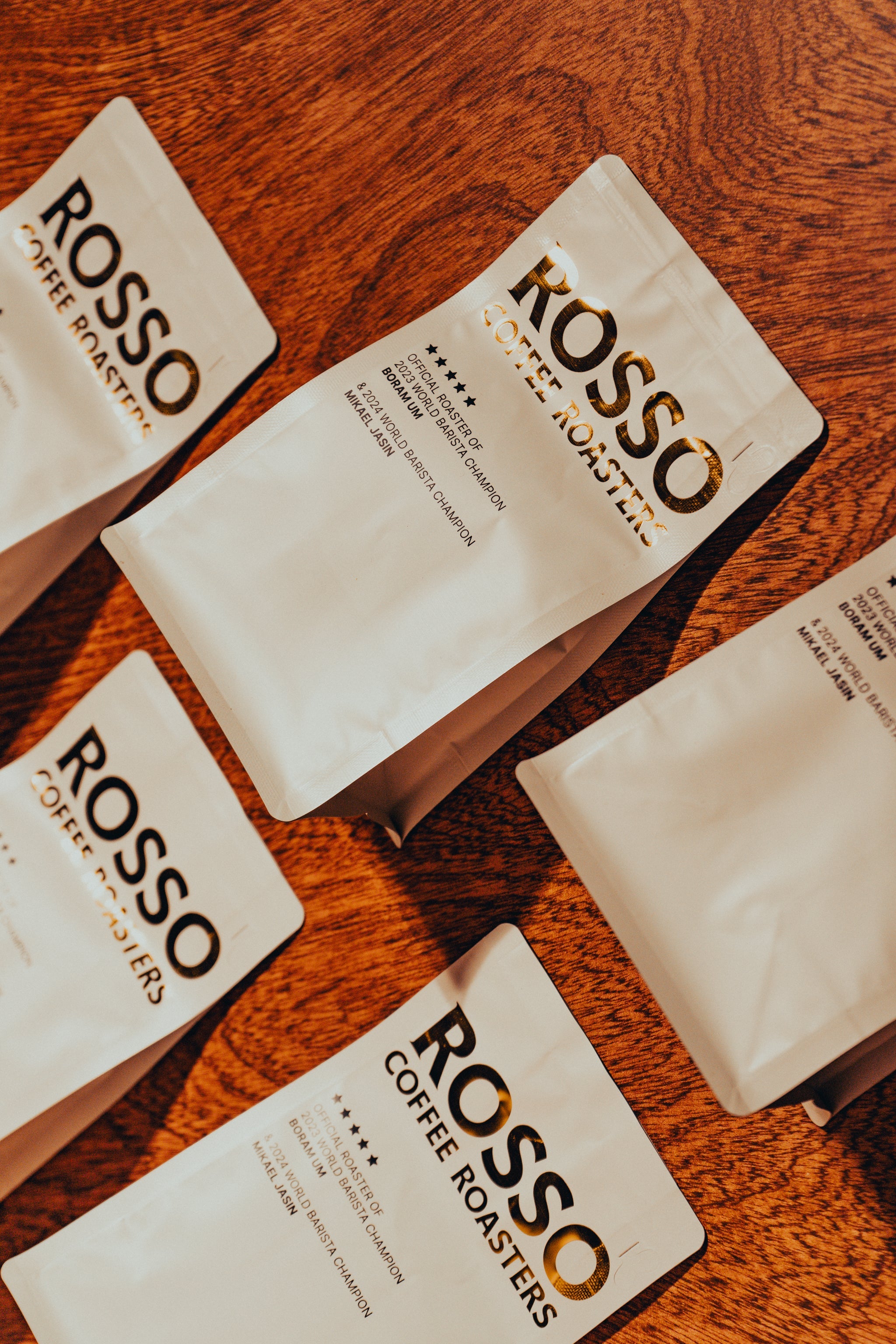

Pinlaung, Part 1
It's our second night in Myanmar and we've just arrived at Hotel Pinlaung Resort (the lack of warm water, the false advertising on free wifi and the astroturf carpet has us hesitant on the resort portion) for our accommodations for the evening. We departed from Calgary on the 1st of February and spent two days in Bangkok to acclimate to the time change of Southeast Asia. It's quite the trek getting to Myanmar. We flew from Calgary to Vancouver, Vancouver to Hong Kong, Hong Kong to Bangkok, Bangkok to Mandalay, where we stayed one night, and then a national flight from Mandalay to Heho. So far, it's been very rewarding getting to know the culture and beginning to understand the coffee industry.
Today was our first day that was truly coffee related. We had stopped at some interesting cafes in the cities we'd been in on long layovers, but that was for pleasure. Now, we're here in Myanmar with a keen eye and ready palette, to find the best coffees Myanmar has to offer. We'll focus on three regions during the seven days we'll spend here; Pinlaung, Ywangan and Pyin Oo Lwin.

Today was day one of two in Pinlaung, where we visited a company called Behind the Leaf Coffee - a fascinating project working with nine villages within Pinlaung. It's run by an American named Melanie, who has lived in Myanmar for 16 years and has spearheaded some amazing initiatives to benefit the people in this rural area. Before chatting about the coffee, I think it's important to note the work she's done in helping to provide clean water to the people she refers to as the Pa-o.
After working with a chemical engineer in Cambodia in the early 2000's, Melanie learned how to build clay water filtration systems. That knowledge, as well as the Christian church, was what originally led her to Myanmar. She found she could benefit the people in rural communities by providing clean water. People such as the Pa-o. Here she founded a company with two Myanmar locals and began building and distributing these water filters. They're built with rice husks infused into ceramic, to give it the proper porosity, and paired with silver nitrate to act as the filter and strip the toxins. The water that comes out the other side is noticeably clean and very nice to drink.

While working with the Pa-o people, Melanie saw an incredible amount of agricultural efforts being focused on opium production and saw an opportunity to push for positive change through the transition to coffee. This is her second season producing coffee, so it's still new to her, but she's seeing the positive change in the nine communities she's working directly with. The majority of farmers are small, small holders with backyard gardens and just a handful of coffee plants. She is working to teach them how to reap seeds from their plants in order to increase the number of trees and ultimately boost the communities' production through the years.
At her wet mill, where she also has her home, Melanie has a well established set up that has an all encompassing look at the coffee chain. It starts with her receiving area, where she floats all the cherries she receives from pick up points at the villages, making sure that all floaters are removed. Cherries that float signify underripe or underdeveloped cherries, so they're removed and dried seperately for internal markets. Then, the juicy, ripe cherries will either go straight to the drying beds, if being processed as a Natural, or they'll go down the hill to the Penagos de-pulper, that we see in most sophisticated operations. There were dozens of drying beds along the property which were filled with deep red cherries of all different drying times, as most of the coffee is done as a Natural.
After the coffee is done drying, there's a small scale dry mill that can be used to remove the parchment and sort for density. Then the coffee goes to another small building where there's a sample roaster and a production roaster - not too different to our own set up and equipment. The coffees we're here to taste are roasted on the sample roaster, then brought upstairs for quality evaluation. So all in all, a pretty sophisticated set up. Melanie has recently finished her Q Grader certification, something that we underwent in 2011 when we were first getting started with our roasting operation.
Tonight we cupped only seven coffees as we arrived quite late, due to travel time and a pit stop at the beautiful Inle Lake, which was on the way. It's one of the main tourist attractions in Myanmar and is seriously worth the visit. There's an entire community that lives in homes built on bamboo stilts on the water. They have floating gardens, hundreds of fishermen, artisan silversmiths and tapestry operations, and supposedly a tofu production facility, which we didn't see first hand. Very fascinating pit stop.
Tomorrow, we're heading back to Behind the Leaf Coffee early to get a jump start on cupping the rest of our samples, and figuring out what sort of unique offerings we can add to our menu. The first table of coffee was a mix of qualities and flavours, so we'll see what tomorrow has to offer. So far, we've been impressed with the small selection of Myanmar coffee we've tried. Overall, the operation at Behind the Leaf has impressed us, and we're fairly confident the coffee will as well.

A neighbouring villager, part of the Pa-o community
To be honest, Pin Laung is quite reminiscent of the West Valley in Costa Rica. This has us quite excited, as we've seen the quality of coffee that's possible there over the past few years of sourcing. This is just the beginning for Myanmar speciality coffee, an industry that's just blossoming here in the country. And an industry that's helping farmers move away from the illegal production of opium*. Or, as Melanie has said, an industry that's been hidden, Behind the Leaf. We'll learn more tomorrow and report back.
*Myanmar is the second largest producer of opium behind Afghanistan.

Jessie eager and excited to evaluate this Myanmar coffee sample
2 comments
-
Sounds amazing glad you got to stop and enjoy the scenery
Danielle on
-
Thoughtful post, offering a window into the whole process of building local producer relationships.
Joanne on










